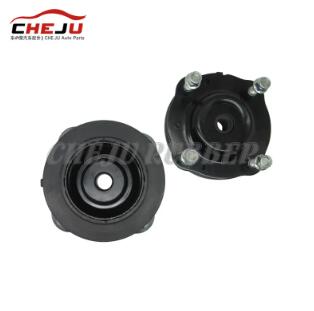Understanding the Safety Implications of a Failing Strut Mount
2024-09-10
The strut mount is a critical component of a vehicle’s suspension system, linking the strut to the vehicle body and absorbing shocks and vibrations. When the strut mount begins to fail, it can compromise your vehicle’s safety, comfort, and handling. This blog explores the potential safety implications of a failing strut mount and what warning signs to look out for.
1. Impact on Vehicle Stability and Control
A failing strut mount can significantly affect the stability and control of your vehicle. The strut mount plays a vital role in keeping the suspension system functioning correctly by maintaining alignment and ensuring smooth, controlled movement. When the mount is worn or damaged, it can cause the following issues:
- Poor Handling: A worn strut mount may lead to a lack of control, particularly during sharp turns or when driving over uneven surfaces. This can make the vehicle more difficult to handle and increase the risk of accidents.
- Increased Body Roll: A compromised strut mount can cause excessive body roll during cornering, making the vehicle feel unstable and unpredictable.
2. Reduced Shock Absorption
The strut mount not only supports the vehicle's weight but also acts as a shock absorber, smoothing out the bumps in the road. When it starts to fail, the vehicle may experience reduced shock absorption, leading to a harsher ride. This poses safety concerns for both the driver and passengers.
- Rough Ride: A failing strut mount leads to more noticeable impacts from potholes, bumps, and uneven road surfaces. This can cause discomfort and reduce the driver’s ability to react quickly in emergency situations.
- Compromised Safety in Emergency Maneuvers: In the event of an emergency maneuver, such as sudden braking or evasive steering, the strut mount’s reduced efficiency can increase stopping distances and reduce the vehicle’s ability to respond effectively.
3. Noisy Operation and Wear on Other Suspension Components
A failing strut mount often produces unusual noises like clunking, squeaking, or rattling, especially when turning the steering wheel or driving over rough terrain. These noises are more than just an annoyance; they indicate that the suspension system is not functioning correctly.
- Increased Wear on Suspension Components: If the strut mount fails, it places additional stress on other suspension components, such as the struts, shocks, and control arms. This accelerated wear can lead to more costly repairs and potential suspension failure, posing a significant safety hazard.
- Steering Issues: Since strut mounts are part of the suspension system that connects to the steering mechanism, failure can lead to increased steering effort and reduced responsiveness, creating a safety risk, particularly at higher speeds or in tight maneuvers.
4. Alignment and Tire Wear Issues
A failing strut mount can cause misalignment of the suspension system, which in turn leads to uneven tire wear. Misaligned tires affect the vehicle’s ability to maintain proper contact with the road, increasing the likelihood of a loss of control.
- Uneven Tire Wear: Misaligned suspension caused by a worn strut mount can cause your tires to wear unevenly. This compromises tire performance and traction, especially in wet or slippery conditions.
- Increased Braking Distance: Uneven tire wear reduces the tire’s grip on the road, increasing braking distances and making it harder to stop in emergency situations.
5. Potential for Suspension Failure
In the most extreme cases, neglecting a failing strut mount can lead to complete suspension failure. This can result in the loss of vehicle control, especially at higher speeds or when performing critical maneuvers.
- Safety Risks: Suspension failure not only affects ride comfort but can also result in catastrophic accidents if the vehicle becomes uncontrollable.
- Costly Repairs: Ignoring the problem can lead to more expensive repairs as other suspension components, such as the struts or control arms, may become damaged.
Conclusion
A failing strut mount poses significant safety risks, from reduced handling and stability to increased tire wear and potential suspension failure. Recognizing the warning signs early and addressing them promptly can prevent accidents, enhance your driving comfort, and avoid costly repairs. Regular inspections and maintenance of your strut mounts are essential for ensuring your vehicle operates safely and efficiently.



